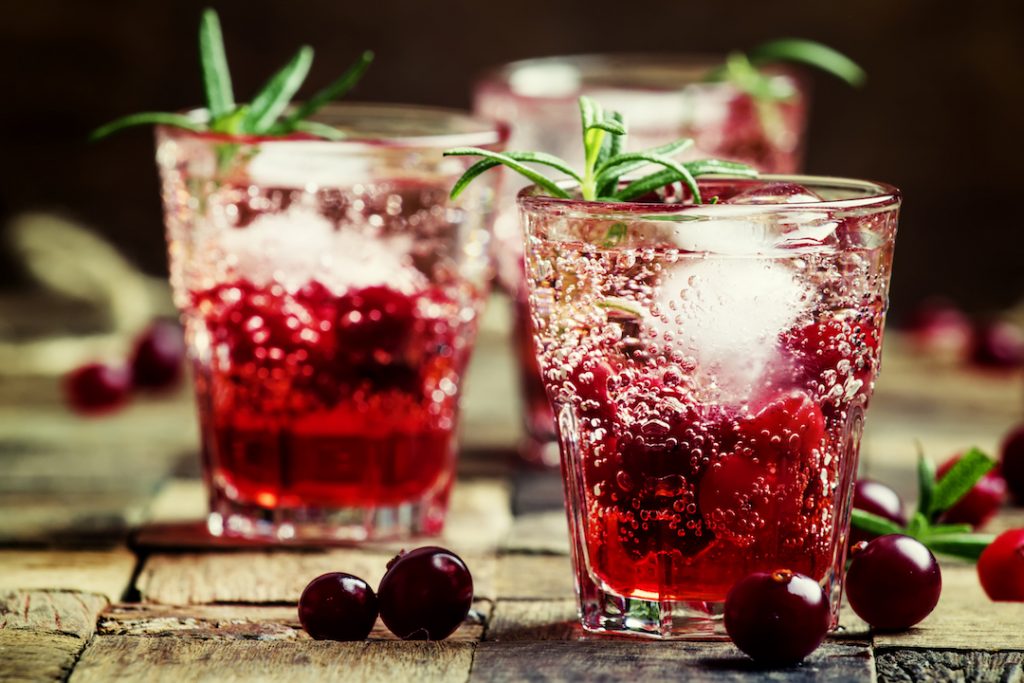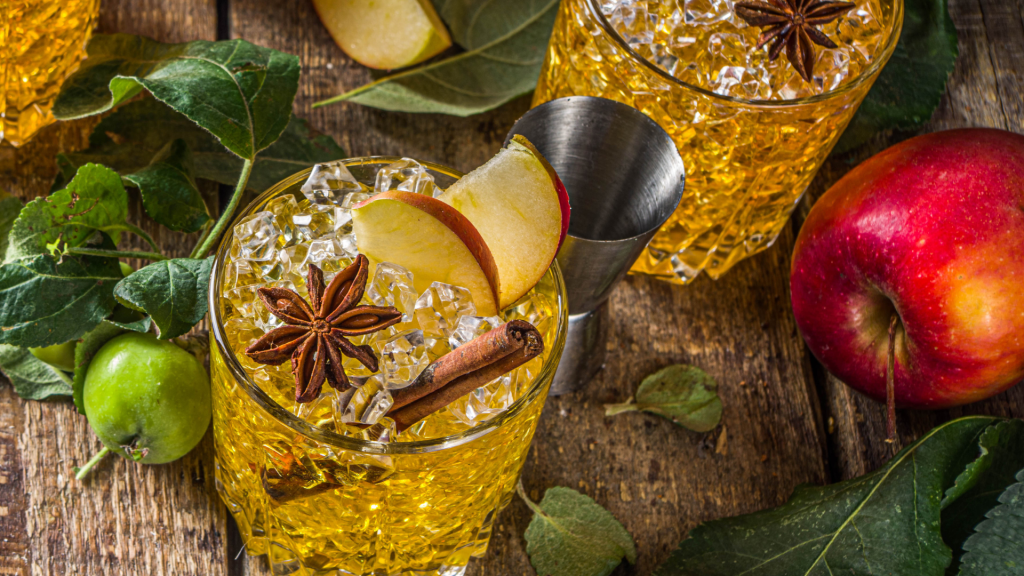Do you want to know more about cider? People hear the word cider and often say, “Too sweet for me!” If that’s your first thought, you’re in for a treat as you discover how versatile this beverage is! Let’s go into a bit of history, explaining how it is made, and providing a starter guide to finding the style of cider that’s right for you.
Cider, often referred to as hard cider, is a fermented, alcoholic beverage made from the juice of apples. It dates back to the Romans in 55 BC, but the beverage became a popular alternative in 13th century Europe because it was safer to drink than water and touted for its health benefits to aid digestion and prevent gout, bladder infections, fevers, and basically any ailment you can imagine. While we all know an apple a day keeps the doctor away, I’m not sure drinking cider will truly cure all of those ailments, but it certainly will make you happy!
The delicious libation, with roots in Europe, was insanely popular in the United States (more so than water!), but cider consumption experienced a decline after Prohibition. During the 1920s, the apples planted were great for eating raw or in pie, which, any cider aficionado knows are not good for cider (Why? Keep reading to find out!). But cider is making a comeback with more cider makers and cider houses popping up across North America.
How Cider is Made
You start with apples. Shocking, I know! However, not apples are created equal…most are made from cider apples, which are grown specifically to make the beverage. Cider apples have high levels of sugar and tannins, which are desirable for fermentation and provide rich aromas and complex structure to the beverage. I strongly recommend not walking through an orchard on an autumnal day and taking a bite of a cider apple because they are very tart in their natural form. Does that feel counterintuitive? Cider apples have high levels of sugar, yet I’m telling you they’re very tart if you take a bite. Cider apples go from inedible to drinkable during fermentation… that leads me to the science that we should get into.
Once the apples are harvested, they run through a mill to extract the fresh juice. The cider mill is like a juicer but more heavy-duty because it has to crush the whole apple, seeds, stem, and all, into a mash called pomace and then extract juice from the pomace. The juice goes into large tanks and is mixed with yeast in order for fermentation to take place. The fermentation is where your G-rated apple cider becomes cider for big kids, and the beverage becomes alcohol. The fermentation time can range from a few days to months.
Once fermentation is finished, now is the fun part, and no, I’m not talking about the drinking. At this point, cider is like a wine and can remain as a single varietal (or, as I would call it, a one-trick pony with a great trick) or can be blended to create a particular taste. Hobbyists who got a cider-making kit for Christmas find it easier to blend before fermentation, while bigger operations like the creative control during and after fermentation. Blending can occur at multiple phases (before, during, and after fermentation), and this decision depends on whether your apples harvest at different times.
Time to drink…..NOOOO, not yet.
The cider maker must decide if she wants to do some carbing, which doesn’t refer to eating a bowl of pasta before a marathon. Carbing is insider lingo for adding carbonation to your fermented beverage. There are two ways to do this. The first way is the path of least resistance…bottle conditioning. Cider gets placed in a bottle with a flip top or champagne bottles for larger quantities, and you mix the cider with priming sugar or a bit of fresh juice. Sugar serves as the food for yeast, and as the yeast eats the sugar, and then you have bubbles as the yeast reproduces. The second method, one that is often scoffed at by cider purists, is when cider is keg carbonated. This means CO2 is forced into the finished product. Regardless of the method, cider tends to be less carbonated than beer because it is lower in sugar, and more sugar equals more fizz. Mind you, cider is fantastic still or sparkling, but it’s an important decision for any producer.
Find a Cider You Love
This historic drink is incredibly versatile for any drinker. The craft boom has expanded the possibility and variety of cider styles, particularly in the U.S., where the beverage was on the D-list as being overly sweet for way too long. From dry to sweet to tannins to bubbles, there is something for everyone if you know what to look for. Here’s a starter guide that can help you find the perfect cider for you, and you can also check out our article on the regional differences.
Dry Cider
Some people call dry cider “traditional cider” or cider for the hardcore. I just call it dry. Typical dry ciders have less than 0.5% residual sugar, leaving drinkers with an acidic and tannic profile. England is known for its dry ciders, and some French ciders also can be dry and even bone dry, much like a brut. Both English and French cider traditionally use oak barrels during fermentation which provides a balance.
Sweet Cider
Sweet ciders are fruit-forward but not cloying. In other words, ciders of this variety will not give you a cavity or put you in diabetic shock. These types of ciders come from Normandy, France, and the United States and are known to have higher residual sugar, which results in a sweeter, heavier cider with strong apple aromas. Ciders of this variety often add other fruit, particularly pears, to add sweetness but with a touch of elegance.
Funky Cider
This is not a cider classification. If you go into your local bar or liquor store, they’ll know what you mean if you are craving a funky cider. There are ciders that are similar to sour beers: cloudy, vinegary, and incredibly tart. Ciders of this variety typically come from Spain, specifically Asturias, and the Basque Country. Letting the cider aerate by “throwing” it, which entails pouring the beverage one meter from the glass, will shed the tartness to reveal a refreshing drink perfect for a hot summer day.
Ready to explore cider as well as other craft drinks? Our next SipScout kit is a Pome Fruit Variety Cider Tasting Kit, featuring 4 incredible craft ciders. Join by June 1, 2023 to get that kit! Learn more
Get Out There and Have Some Cider!
I know, I know… you may have had some bad, overly sweet experiences with cider, particularly in the United States. But even in the US, the amazing craft cider revolution that is taking place is vastly expanding the repertoire of modern ciders available. Dry and funky European-style ciders with an American bent are taking your local bar by storm…so let’s get out there and start exploring! For those new to cider, welcome to the party. We’d love to hear what you’re discovering or maybe even what other myths are still holding you back from jumping in. For those who are already cider enthusiasts, please share some of your favorites so we can check them out, report back, and continue to spread the cider-loving word.
This is an updated version of this article, posted in 2017.





